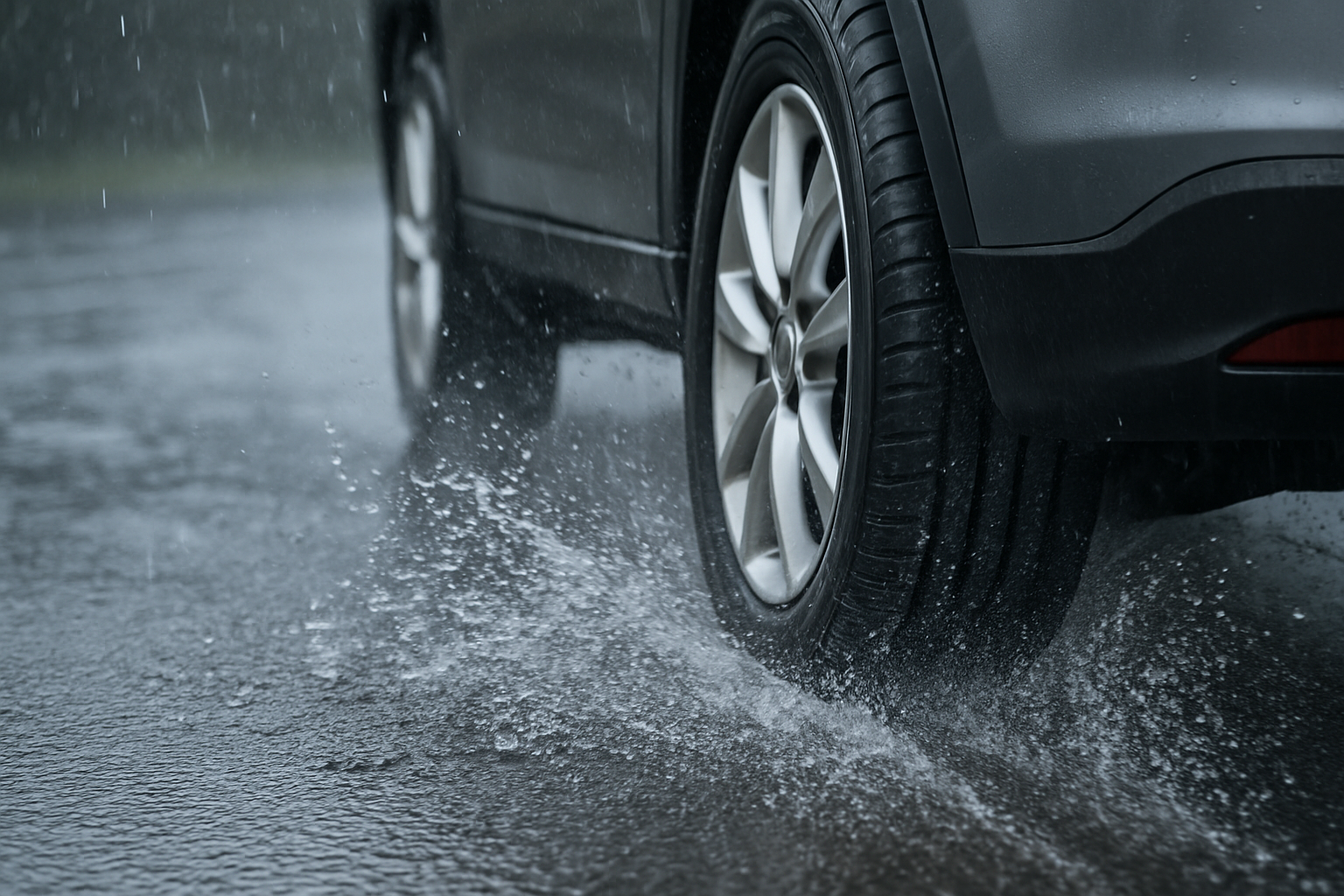Hook: Slamming on the brakes in heavy rain can lead to skids, and hitting a patch of standing water may send you aquaplaning out of control. Master these wet road driving skills and hydroplaning recovery techniques to stay safe when the pavement turns slick.
- Key braking adjustments for maximum traction
- Step-by-step hydroplaning recovery method
- Pro tips to minimize risks on rain-soaked roads
1. Adjust Your Braking Technique for Wet Conditions
On wet pavement, your tires have up to 50% less grip than on dry roads. To compensate:
- Increase following distance: Double your normal gap to allow extra stopping room.
- Brake early and gently: Apply steady, light pressure—avoid hard, abrupt braking that locks up wheels.
- Use threshold braking (non-ABS vehicles): Apply firm pressure just below the point where wheels begin to skid.
- Pump brakes (non-ABS): If you feel wheel lock-up, quickly pump the pedal to restore rotation and grip.
2. Recognize & Recover from Hydroplaning
Hydroplaning happens when a thin water layer lifts your tires off the pavement, causing loss of steering and braking control. Follow these steps:
Step 1: Stay Calm & Remove Foot from Pedals
Don’t jam on brakes or goose the throttle. Ease off both accelerator and brake to let the car slow naturally.
Step 2: Steer Straight & Avoid Sudden Inputs
Keep the wheel centered. Jerked steering motions can trigger a spin once grip returns.
Step 3: Feel for Grip Return
When tires reconnect, you’ll feel slight feedback through the steering wheel and a drop in engine RPM. Maintain gentle control—don’t chase the wheel.
Step 4: Resume Controlled Braking
Once you have traction, reapply brakes smoothly. If you need to slow more quickly, use light, repeated pressure rather than a single hard push.
3. Pro Tips to Stay Safe on Wet Roads
- Avoid standing water: Swerving around large puddles reduces hydroplaning risk.
- Proper tire maintenance: Ensure tread depth is above 3/32″ and tires are inflated to spec for optimal water evacuation.
- Downshift early: In manual cars, use engine braking in higher gears to reduce reliance on traction-limited brakes.
- Use cruise control wisely: Turn it off in heavy rain—automatic throttle inputs can increase hydroplaning chances.
- Choose safe lines: Follow the tracks left by vehicles ahead, where water film is thinner.
4. Common Pitfalls to Avoid
- Over-braking: Panic stops lock wheels and eliminate any remaining traction—avoid stamping on the pedal.
- Sharp steering: Jerky turns during a skid can cause a spin—keep inputs smooth and deliberate.
- Ignoring warning signs: Spray from other cars and reduced engine sound are early indicators—slow down at the first hint of spray.
- Worn tires: Bald or unevenly worn tires drastically reduce hydroplaning thresholds—inspect and replace promptly.
FAQs
- Q1: What speed causes hydroplaning?
- A1: Most tires can hydroplane above 35–55 mph on deep water—slow to below 35 mph when heavy rain or standing water is present.
- Q2: Can AWD prevent hydroplaning?
- A2: All-wheel drive helps with acceleration on wet roads but does not improve braking or cornering traction—skills and tires are still critical.
- Q3: Should I use ABS or pump brakes?
- A3: If your car has ABS, apply firm, continuous pressure. If you don’t, pump the brakes to prevent wheel lock-up and restore traction.
Conclusion & Next Steps
Understanding these wet road driving skills—from gentle braking modifications to precise hydroplaning recovery steps—can make a life-saving difference. Before your next rainy drive, check tire condition, reduce speed, and stay alert to roadway hazards. With practice and preparedness, you’ll navigate slick surfaces with confidence and control.
